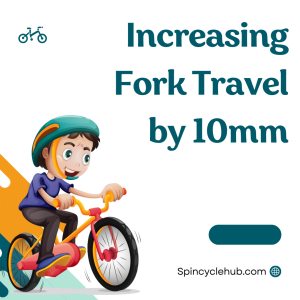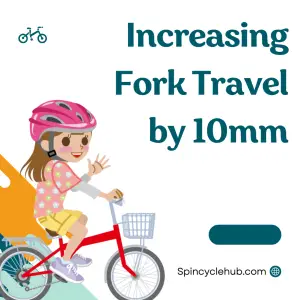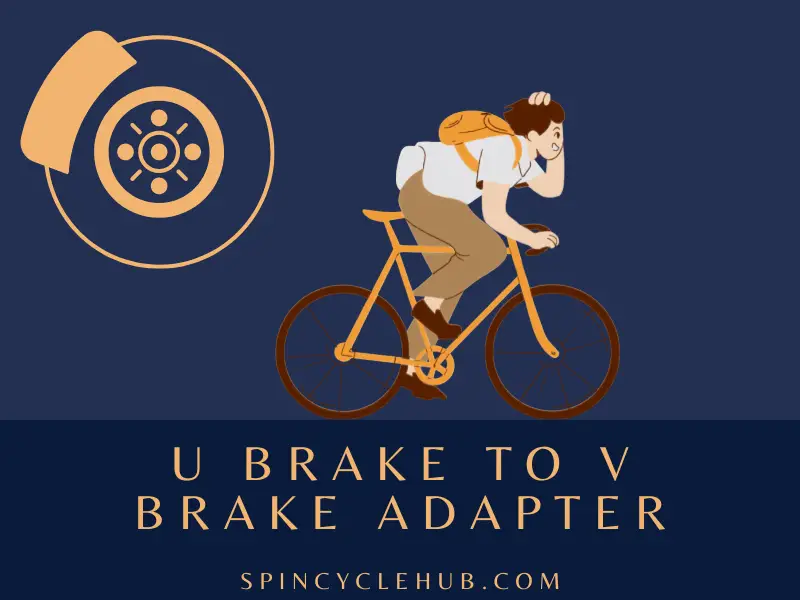Introduction
Exploring the World of Mountain Biking
If you’re a mountain biking enthusiast, you know that the right equipment can make a significant difference in your riding experience. One of the key components of a mountain bike is its suspension system, particularly the front fork. The fork plays a crucial role in absorbing impacts, maintaining traction, and providing a smooth ride over rough terrain.
Understanding Fork Travel
The Basics of Fork Travel
Fork travel refers to the distance the fork can compress and extend. It determines how much suspension travel your bike has, and it directly affects how your bike handles different types of terrain. A longer fork travel provides increased suspension travel, allowing you to tackle more challenging trails with confidence.

The Desire for More Travel
As riders progress and seek more aggressive riding experiences, they often find themselves craving additional fork travel. The demand for increased travel stems from the desire to conquer bigger obstacles, ride faster, and tackle rougher terrains without compromising control and stability.
The Benefits of Increasing Fork Travel
Enhanced Capability and Versatility
By increasing the fork travel by 10mm, you can unlock a whole new level of capability and versatility in your mountain bike. The additional travel allows the fork to soak up larger bumps and drops, providing improved control and stability. With increased travel, you’ll find yourself conquering technical descents with greater confidence.
Improved Comfort and Control
A longer fork travel helps smoothen the ride over rough and rocky terrain. The added suspension absorbs impacts more effectively, reducing fatigue and improving overall comfort. With improved control, you’ll be able to navigate through challenging sections with greater ease, making your rides more enjoyable and less physically demanding.
Better Traction and Handling
Increased fork travel also translates to enhanced traction and handling. The fork’s ability to stay engaged with the ground for longer periods increases grip, allowing you to maintain better control over your bike. This can be especially beneficial when riding through loose or unpredictable terrain, providing a safer and more stable riding experience.
Considerations When Increasing Fork Travel
Frame Compatibility
Before increasing your fork travel, it’s essential to consider frame compatibility. Different bike frames are designed to work with specific fork travel ranges. Check your bike’s manufacturer guidelines or consult a professional bike mechanic to ensure that your frame can accommodate the increased travel without compromising safety or performance.
Bike Geometry and Handling
Increasing fork travel can affect your bike’s geometry and handling characteristics. The altered fork angle and increased front-end height can impact how the bike responds to steering inputs and cornering. It’s important to experiment and find the right balance for your riding style and preferences, considering factors such as head angle, trail, and wheelbase.
The Process of Increasing Fork Travel
Seeking Professional Assistance
Increasing fork travel is not a DIY job for most riders. It requires specialized tools, technical expertise, and knowledge of your bike’s specific requirements. It’s highly recommended to seek the assistance of a qualified bike mechanic who can assess your bike, make the necessary modifications, and ensure everything is properly aligned and adjusted.
Upgrading the Fork
To increase fork travel, you’ll likely need to upgrade to a fork that offers the desired travel range. Research various fork options available in the market and consider factors such as compatibility, performance, and budget. Choose a reputable brand known for producing reliable suspension forks that align with your riding needs.
Professional Installation and Tuning
Once you have selected a suitable fork, have it professionally installed by a bike mechanic. This ensures that all components are properly assembled, torqued, and adjusted according to manufacturer specifications. A professional can also fine-tune the suspension settings to optimize performance, ensuring the fork operates smoothly and efficiently.
Conclusion
Increasing fork travel by 10mm can open up a world of new possibilities for mountain bikers. It enhances capability, improves comfort and control, and provides better traction and handling. However, it’s crucial to consider frame compatibility, bike geometry, and seek professional assistance when making such modifications. With the right approach, you can transform your mountain bike into a formidable machine that conquers any trail with ease.

FAQs
1. Can I increase the fork travel on any mountain bike?
Increasing fork travel depends on your bike’s frame design and its compatibility with different fork lengths. It’s best to consult your bike’s manufacturer guidelines or a professional bike mechanic for specific recommendations.
2. Will increasing fork travel affect my bike’s warranty?
Modifying your bike, including increasing fork travel, can potentially void your bike’s warranty. It’s important to understand the implications and consult your bike’s manufacturer or authorized dealer for guidance.
3. How much does it cost to increase fork travel?
The cost of increasing fork travel varies depending on factors such as the cost of the new fork, installation fees, and any additional components required. It’s advisable to consult with a bike mechanic or shop to get an accurate estimate for your specific bike and desired modifications.
4. Are there any downsides to increasing fork travel?
While increasing fork travel can enhance performance, it may also impact your bike’s handling characteristics. It’s crucial to find the right balance and consider factors like bike geometry, frame compatibility, and personal preferences to ensure optimal performance and safety.
5. Can I increase fork travel on my own, or do I need professional help?
Increasing fork travel typically requires professional assistance due to the technical expertise and specialized tools involved. It’s recommended to consult a qualified bike mechanic who can properly assess your bike, make the necessary modifications, and ensure everything is correctly installed and adjusted.
Watch this one,
Video Credits – Dr. J MTB
DOWNLOAD THIS ARTICLE :Click Here
You May Also Like
-
27 x 1 1/4 Inner Tube Equivalent: Finding the Right Fit for Your Bike
-
Bontrager Select B 700×25: The Ultimate Tire for Smooth Rides



